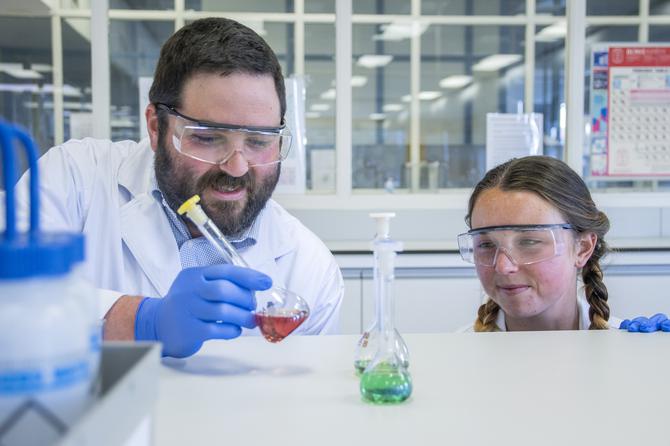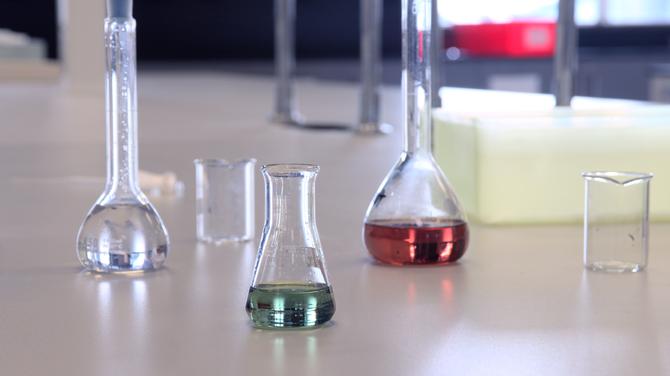Chemists at the University of Tasmania have developed an instant colour-change test for so-called forever chemicals, or PFAS, in contaminated soil or water.
The proof-of-concept study for one of the most prevalent perfluorinated alkyl substances (PFAS), known as PFOA, has been published in the journal Chemical Communications.
Project leader Dr Nathan Kilah said it was the first instant
colour-change test developed for such chemicals.
PFAS were widely used
in the manufacturing process for a range of products including stain-resistant
fabrics, beauty products, fast food packaging and non-stick cookware.
These chemicals were
also used extensively in water-based firefighting foams, which means they exist
in high concentrations around airfields throughout Australia and the world.
Dr Kilah said the
presence of PFAS could potentially impact the communities surrounding the
contamination sites, so it was important to have access to a fast and accurate
method of detection.

Dr Nathan Kilah and PhD student Chloe Taylor (Credit: Peter W. Allen)
“One of the great challenges of this type of pollution is to determine where it is found in the environment. This normally requires expensive, specialised lab equipment that is a long way away from the contaminated site,” he said.
“This test represents a rapid way of determining if the common PFAS pollutant perfluorooctanoic acid is present in soil samples.
The end goal is to empower everyday people to assess whether their soil or water is contaminated with these pollutants.
“We want to make this method as easy as shaking some soil with a mix of our sensor, or perhaps translate it to a dipstick. We’ve got a way to go to bring a product to the market, but the science of our molecule and the need for such a product are very clear.”

The solution changes colour from red to green if PFAS is present (Credit: Peter W. Allen)
The test relies on a brightly coloured molecule prepared by PhD candidate Chloe Taylor. The molecule was designed with a cavity that is filled by the pollutant and changes colour if PFAS is present.
My initial interest was in making new molecules to see what they could do. It is very exciting to take what I’ve made and apply it to a real-world problem.
“We developed a solution that is red when it’s on its own, but when it comes into contact with the pollutant it changes to green. The molecule acts like a basket or net and when it catches one of the single pollutants, this causes a physical change that results in the colour change.”
The team is working
on commercialising their discovery with the University to make it available not
only to environmental scientists, but also to people at home who are concerned
about their own potential PFAS exposure.
ChemComm is the Royal
Society of Chemistry’s journal for urgent communications of outstanding
significance from across the chemical sciences.



